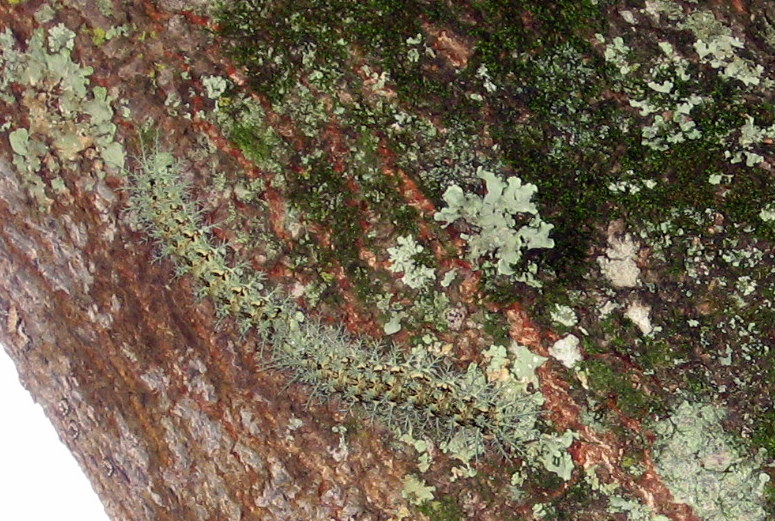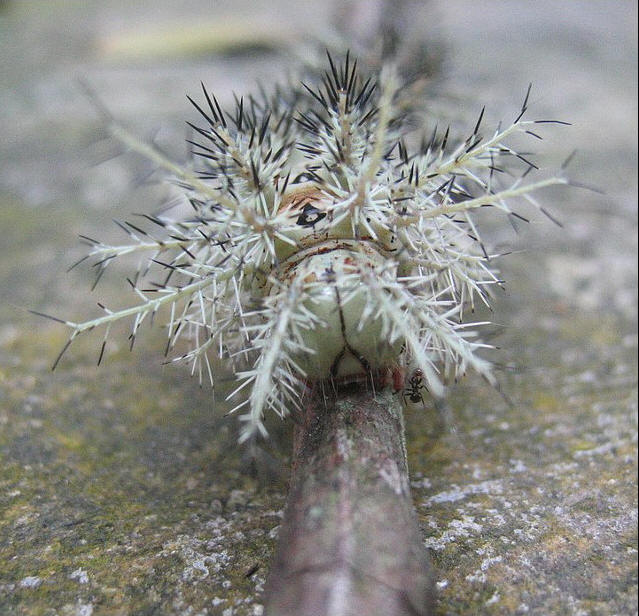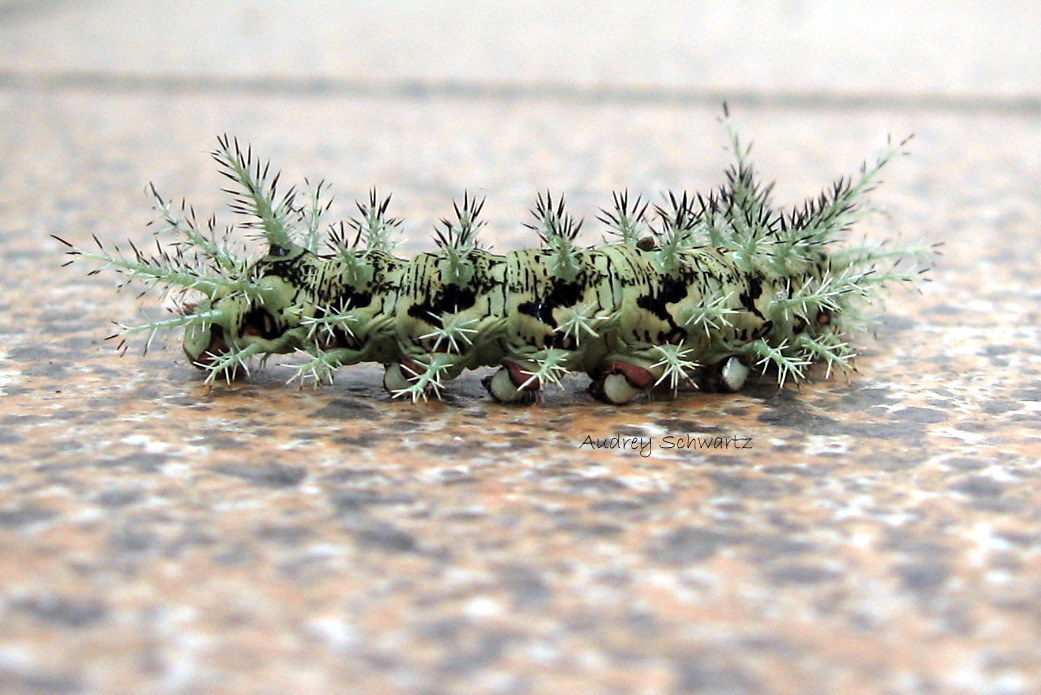Adaptation For Life
Color:
The giant moth caterpillar has a brownish-green color which
is seen on the bristles along its body (Carrijo-Carvalho and
Chudzinski-Tavassi 2007). The
 color allows for camouflage in the
trees that it likes to live in. The color blends in very well
with the leaves on guava trees, fig trees, and yellow plum trees
in which the larva enjoy to live on and are often found on
(Veiga et al. 2001 ). As the L. obliqua is in its larva state,
the necessity to stay protected from possible predators is very
important. They have not yet reached full adulthood so if the
larva were to die before they change into a moth their survival
rate would be very low. We know that they do not have a
population number problems due to the migration. Also large
populations of the larva are found in rural area in Southern
Brazil so the camouflage must be a benefit to the L. obliqua
(Schmitberger et al. 2013).
color allows for camouflage in the
trees that it likes to live in. The color blends in very well
with the leaves on guava trees, fig trees, and yellow plum trees
in which the larva enjoy to live on and are often found on
(Veiga et al. 2001 ). As the L. obliqua is in its larva state,
the necessity to stay protected from possible predators is very
important. They have not yet reached full adulthood so if the
larva were to die before they change into a moth their survival
rate would be very low. We know that they do not have a
population number problems due to the migration. Also large
populations of the larva are found in rural area in Southern
Brazil so the camouflage must be a benefit to the L. obliqua
(Schmitberger et al. 2013).
Bristle size:
L. obliqua has various sized bristles all over its body. That
can help to protect the larva from all different size of predators. If there
was a
army ant trying to attack the caterpillar, the long bristles may not
protect the larva, but the short ones may have a chance at harming them. For
the bigger animals, the longer bristles would be able to protect the
caterpillar from
monkeys or most other animals. With the whole combination
of bristles, birds may be able to get around the long and short ones but in
some way the odds that a bird would get stung with the bristles would be
high (Carrijo-Carvalho and Chudzinski-Tavassi 2007).
protect the larva from all different size of predators. If there
was a
army ant trying to attack the caterpillar, the long bristles may not
protect the larva, but the short ones may have a chance at harming them. For
the bigger animals, the longer bristles would be able to protect the
caterpillar from
monkeys or most other animals. With the whole combination
of bristles, birds may be able to get around the long and short ones but in
some way the odds that a bird would get stung with the bristles would be
high (Carrijo-Carvalho and Chudzinski-Tavassi 2007).
Chitin rich bristles:
The bristles are made up of a layer of chitin on the outside
of each bristle. Other arthropods also have chitin like the
bombardier beetle and the
pill bug. The base of the bristle which is attached to the body of
the caterpillar is much thinner than the tip of the bristle. Since the base
is not as thick, it can break off more easily and release the venom to the
victim. Chitin is the perfect fit for these bristles because it is fragile
when the caterpillar needs it to be and strong for the times it needs extra
protection (Veiga et al. 2001 andCarrijo-Carvalho and Chudzinski-Tavassi
2007).

Hollow bristles:
The bristles on the caterpillar are hollow to allow the venom
to be stored. When the bristles are brushed up against the tip can penetrate
the skin of whatever has touched.it. After breaking off, the venom can be
transferred from the caterpillar to the victim without harming the
caterpillar (Veiga et al. 2001). Also by having the bristles hollow, the
ability for them to become longer is easier, which then allows the
caterpillar to look bigger than it really is and can be used as a defense
mechanism. That is important because when they look larger than they really
are the ability to ward off predators that may try to eat them greatly
decreases (Carrijo-Carvalho and Chudzinski-Tavassi 2007).
Poison:
The L. obliqua has a very strong poison that can be ejected
into a victim by just touching the caterpillar. The poison can do a lot of
damage to any organism that it may come in contact with (Schmitberger et al.
2013). You can learn more about the venom that this very special caterpillar
has by looking at the next page about venom.